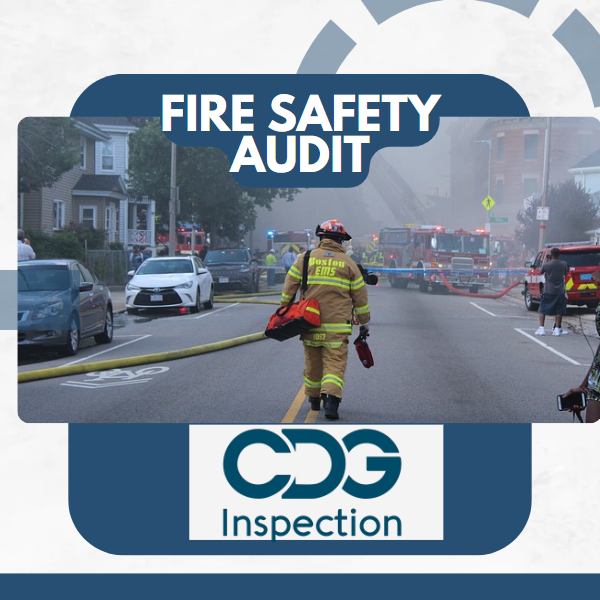Introduction:
Fire safety is a critical aspect of building management and the protection of lives and property. While compliance with fire safety regulations is essential, true safety goes beyond meeting minimum requirements. Fire safety audits play a vital role in advancing fire safety standards by going above and beyond mere compliance. In this blog post, we will explore how fire safety audits contribute to advancing fire safety standards and creating safer environments for everyone.
Identifying Hidden Hazards
1.1. Fire safety audits are comprehensive assessments that go beyond compliance, aiming to identify hidden hazards within a building. Trained professionals conduct thorough inspections, examining every aspect of the premises.
1.2. They scrutinize electrical systems, heating equipment, storage areas, and emergency exits to identify potential fire risks that may not be immediately apparent.
1.3. By uncovering these hidden hazards, audits enable proactive measures to eliminate or mitigate risks, preventing potential fire incidents and enhancing overall safety.
Evaluating the Effectiveness of Safety Measures
2.1. While compliance with fire safety regulations is crucial, audits assess the effectiveness of existing safety measures beyond mere compliance. Auditors review fire detection systems, such as smoke detectors and fire alarms, to ensure they are functioning optimally and strategically placed throughout the building.
2.2. They also evaluate the condition and accessibility of fire extinguishers, sprinkler systems, emergency lighting, and exit signage.
2.3. By evaluating these safety measures, audits help identify areas for improvement, ensuring that the building is equipped with the most effective and reliable fire safety equipment.
Continuous Improvement of Safety Protocols
3.1. Fire safety audits serve as a catalyst for continuous improvement in fire safety protocols. They provide an opportunity to review and update safety protocols based on industry best practices and emerging technologies.
3.2. Audits prompt building owners and managers to stay updated with the latest advancements in fire safety, allowing them to implement cutting-edge measures.
3.3. This continuous improvement ensures that buildings are prepared to handle evolving fire safety challenges and provides occupants with the highest level of protection.
Enhancing Emergency Preparedness
- Fire safety audits contribute significantly to enhancing emergency preparedness. Auditors thoroughly assess the building’s emergency response plans, evacuation routes, and communication systems. They also review the adequacy of fire safety training provided to occupants, ensuring they are well-prepared to respond effectively in case of a fire emergency.
- By identifying gaps in emergency preparedness, audits enable building owners and managers to implement targeted measures, such as conducting drills or providing additional training, to enhance the building’s overall emergency response capabilities.
Promoting a Culture of Safety
- Beyond compliance, fire safety audits play a crucial role in promoting a culture of safety within buildings. They raise awareness among occupants about the importance of fire safety and the proactive measures in place to protect them.
- By conducting regular audits, building owners demonstrate their commitment to the well-being of occupants and instill a sense of responsibility for fire safety among all individuals within the building. This culture of safety encourages active participation, vigilance, and adherence to fire safety protocols, further enhancing the overall safety of the premises.
Collaboration and Industry Benchmarking
- Fire safety audits also facilitate collaboration among industry professionals and promote benchmarking of best practices. By sharing audit findings and recommendations, experts can learn from one another’s experiences and apply successful strategies in different buildings.
- This collaborative approach fosters a collective effort to advance fire safety standards and continuously raise the bar for safety across the industry.
Conclusion
Fire safety audits go beyond compliance to advance fire safety standards and create safer environments. By identifying hidden hazards, evaluating safety measures, continuously improving safety protocols, enhancing emergency preparedness, promoting a culture of safety, and fostering collaboration, audits contribute to a proactive approach to fire safety management. Building owners and managers should prioritize regular fire safety audits to not only meet compliance requirements but also strive for excellence in fire safety, ultimately ensuring the well-being and protection of everyone within the building.

